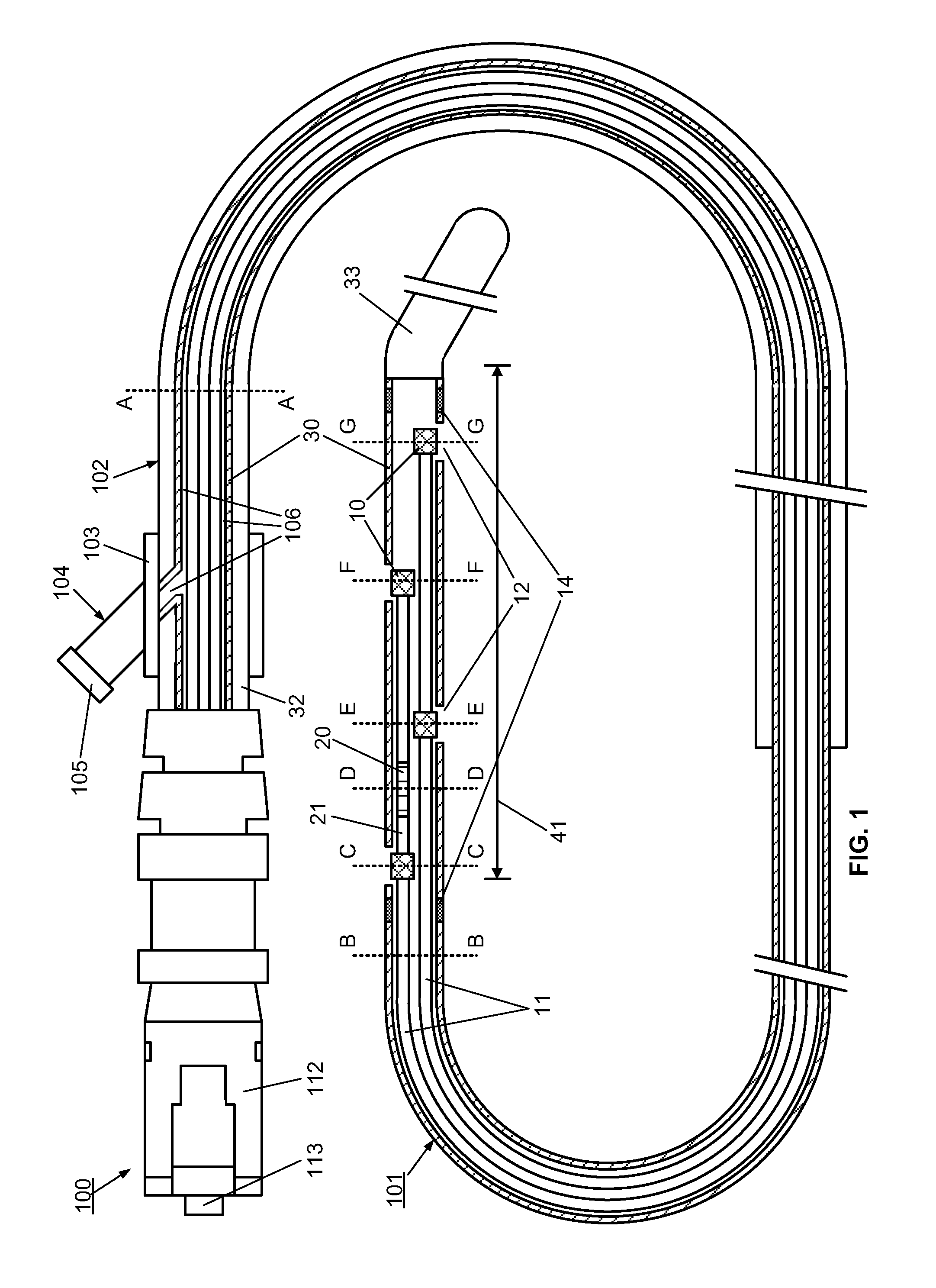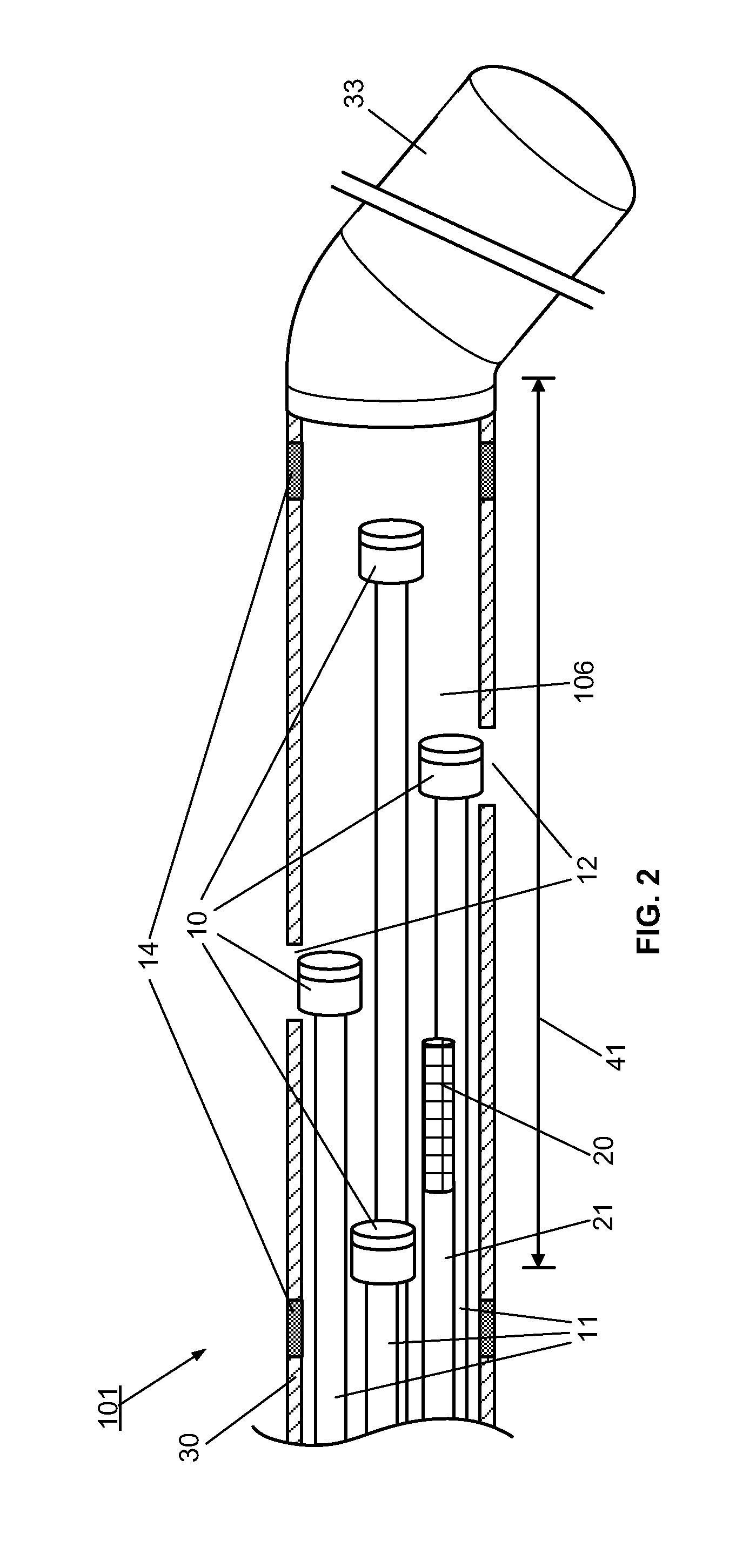Apparatus, system and methods for measuring a blood pressure gradient
a technology of fluid pressure gradient and apparatus, applied in the field of apparatus, system and methods for measuring fluid pressure gradient, can solve the problems of shortening the life of patients, significant morbidity and mortality, and restricting day to day activities, so as to achieve accurate quantification of parameters, assess or monitor physiologic performance, and minimal or negligible disruption of heart valve function.
- Summary
- Abstract
- Description
- Claims
- Application Information
AI Technical Summary
Benefits of technology
Problems solved by technology
Method used
Image
Examples
second embodiment
[0095]However, the use of the optical multi-sensor wire 100 in the form of a micro-catheter will first be described very briefly, so as to introduce a second embodiment in which the multi-sensor wire takes the form of a guidewire.
[0096]In summary, in use of the optical multi-sensor wire 100 in the form of a micro-catheter, for measurement of intravascular or transvalvular blood pressure gradients and flow, a cardiologist would first introduce a guide / support catheter to allow the optical multi-sensor wire to be quickly introduced into the region of interest. A guide catheter may already be in place for other cardiac procedures. If not, conventionally, this would involve first introducing a conventional guidewire, which can be torqued using established techniques, for other intravascular or cardiac procedures. Such a guidewire typically includes a J tip and has suitable flexibility and torque characteristics to allow it to be steered and guided to position the type in the region of i...
first embodiment
[0111]A method, according to the present invention, for measuring and monitoring the blood pressure gradient across the aortic valve 211, i.e. the aortic transvalvular pressure gradient, in a human heart 200 using a multi-sensor wire 100 according an embodiment, such as described with reference to FIGS. 1 to 4, is described below with reference to FIG. 8. A conventional guidewire is first inserted into a peripheral artery, such as the femoral or carotid, using known techniques, and advanced through the ascending aorta 210. A support catheter 160 is then slid over the guidewire. The operator then advances and positions the support catheter 160 in proximity to the aortic valve 211, using visualization devices such as radio-opaque markers on its distal end. The operator then replaces the guidewire by the multi-sensor wire 100 in the lumen of the support catheter 160. The operator advances and positions the distal end of the multi-sensor wire 100 into the left ventricle 212 using visual...
third embodiment
[0113]A method, to measure and monitor the blood pressure gradient across the tricuspid valve 222, i.e. the tricuspid transvalvular pressure gradient, in a human heart 200, is described below and illustrated by FIG. 10. A guidewire is first inserted into a peripheral large vein, such as the inferior vena cava 220, using known techniques, and advanced through the ascending vein 220 to the right atrium 221. The support catheter 160 is then slid over the guidewire. The operator then advances and positions the support catheter 160 in proximity to the tricuspid valve 222, using visualization devices such as radio-opaque markers on its distal end. The operator then replaces the guidewire by a multi-sensor wire 100 in the lumen of the support catheter 160. The operator advances and positions the distal end of the multi-sensor wire 100 into the right ventricle 223 using visualization devices such as radio-opaque markers 14 on its distal end. Once the multi-sensor wire 100 is properly posit...
PUM
 Login to View More
Login to View More Abstract
Description
Claims
Application Information
 Login to View More
Login to View More - R&D
- Intellectual Property
- Life Sciences
- Materials
- Tech Scout
- Unparalleled Data Quality
- Higher Quality Content
- 60% Fewer Hallucinations
Browse by: Latest US Patents, China's latest patents, Technical Efficacy Thesaurus, Application Domain, Technology Topic, Popular Technical Reports.
© 2025 PatSnap. All rights reserved.Legal|Privacy policy|Modern Slavery Act Transparency Statement|Sitemap|About US| Contact US: help@patsnap.com



